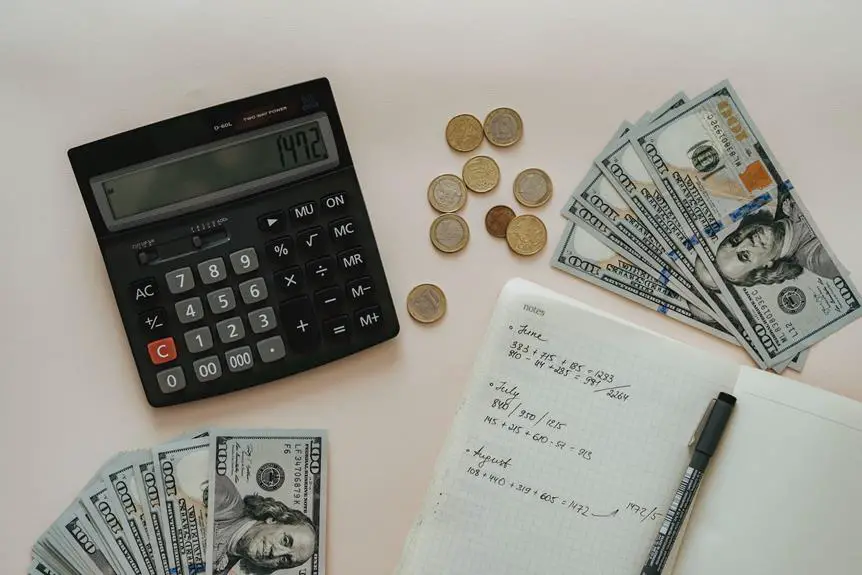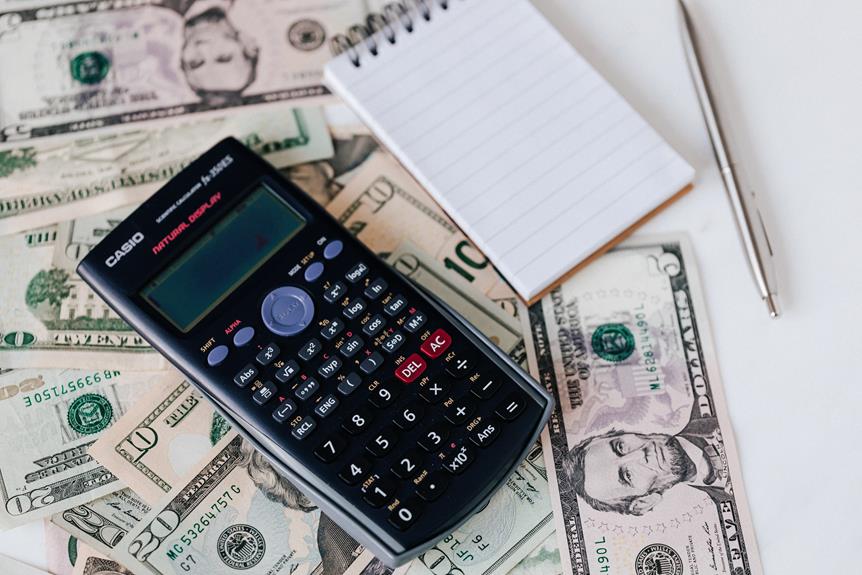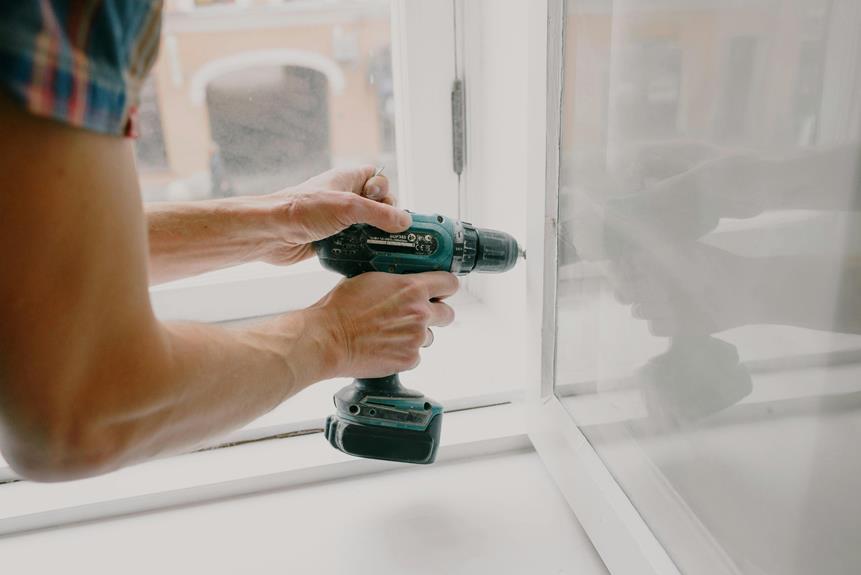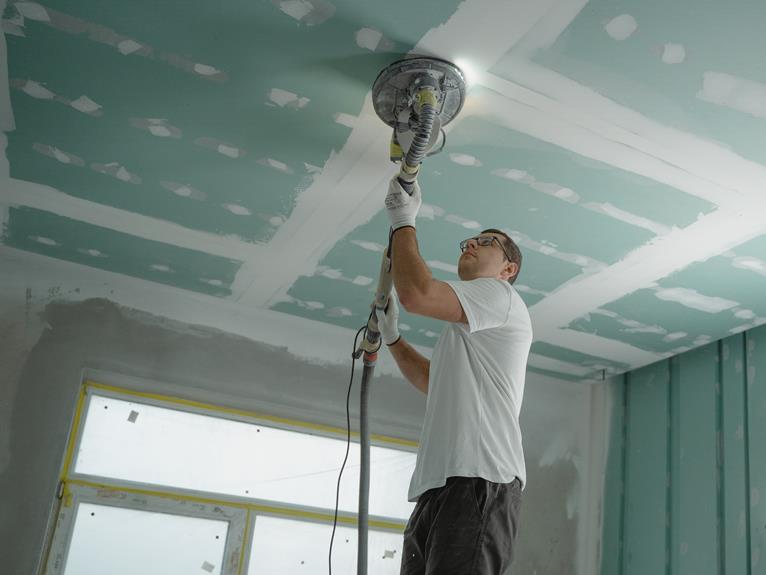No one enjoys the stress and frustration that comes with unexpected car repairs and maintenance costs. That’s why it’s essential to have a budget in place specifically dedicated to car maintenance and repairs.
How can you ensure that your car stays in top shape without breaking the bank? Well, that’s where budgeting for car maintenance and repairs comes in.
By allocating funds for these expenses in advance, you can better manage your finances, avoid financial strain, and ensure that your vehicle stays in good working condition.

Why Budget for Car Maintenance?
Budgeting for car maintenance is essential to ensure the longevity and reliability of your vehicle. By estimating repair frequency and prioritizing repairs, you can better plan and save for unexpected repairs. Regular check-ups are crucial to catch any potential issues early on and prevent costly repairs down the line.
When it comes to car maintenance, it’s important to consider whether to tackle repairs yourself or seek professional help. DIY repairs can save you money, but they require the necessary skills, tools, and time. If you’re confident in your abilities and have access to the right resources, DIY repairs can be a cost-effective option.
However, certain repairs are best left to the professionals. Complex electrical or mechanical issues, for example, may require specialized knowledge and equipment. Investing in professional repairs ensures that the job is done correctly and minimizes the risk of further damage.
In addition to budgeting for routine maintenance and repairs, it’s crucial to set aside money for unexpected repairs. Cars are complex machines, and unexpected issues can arise at any time. Having a financial cushion specifically for car repairs will provide peace of mind and prevent financial strain when unexpected repairs are needed.
Understanding Common Car Maintenance Costs
Understanding the costs associated with common car maintenance is essential for budgeting and planning for the upkeep of your vehicle. By estimating repair frequency, you can better prepare for unexpected expenses.
One common maintenance cost to consider is tire replacements. Tires wear out over time and need to be replaced to ensure safety and optimal performance. It’s a good idea to start saving for tire replacements ahead of time, so you aren’t caught off guard when the time comes.
Prioritizing car repairs is important. Some repairs may be more urgent than others, and it’s crucial to address those first to prevent further damage and costly repairs down the road. When budgeting for car maintenance, don’t forget to factor in regular oil changes. Neglecting this essential maintenance can lead to engine problems and expensive repairs.
Finally, consider doing some DIY car maintenance. Simple tasks like changing your air filter or replacing windshield wipers can save you money in labor costs.
Understanding these common car maintenance costs will help you effectively budget and keep your vehicle running smoothly.
Estimating the Frequency of Maintenance
To effectively plan for car maintenance and repairs, it is important to accurately estimate the frequency of maintenance tasks. By understanding how often your car needs specific maintenance, you can create a maintenance schedule that aligns with your budget planning. Estimating the frequency of maintenance allows you to anticipate the costs and plan for them accordingly.
To help you estimate the frequency of maintenance, refer to the table below:
| Maintenance Task | Frequency | Cost Calculation |
|---|---|---|
| Oil Change | Every 3,000 miles | Based on oil type and labor |
| Tire Rotation | Every 5,000 miles | Usually included in tire purchase or minimal fee |
| Brake Inspection | Every 10,000 miles | Varies based on brake condition and labor cost |
| Air Filter Replacement | Every 15,000 miles | Cost of air filter and labor |
By following preventative measures and adhering to the recommended maintenance schedule provided by your car manufacturer, you can minimize the frequency of repairs and unexpected expenses. Regular maintenance not only extends the lifespan of your car but also helps you avoid costly repairs down the line.
Estimating the frequency of maintenance tasks and incorporating them into your budget planning ensures that you are prepared for any necessary car maintenance expenses. Remember, staying proactive with maintenance saves you money in the long run and contributes to the overall reliability and performance of your vehicle.
Factors Affecting Repair Costs
Knowing the factors that can influence repair costs is essential for effective car maintenance planning and budgeting. Several factors can affect the cost of repairs, and being aware of them can help you budget and allocate funds accordingly.
The first factor to consider is the type of repair needed. Different repairs require different levels of expertise, time, and materials, which can impact the overall cost. For example, a simple brake pad replacement may be less expensive compared to a major engine repair.
Another factor is the age and make of your car. Older cars tend to have more wear and tear, and finding replacement parts for them can be more challenging and costly. Luxury or imported cars may also have higher repair costs due to the specialized parts and expertise required.
The severity of the issue is also a significant factor. Minor repairs, such as replacing a light bulb or fixing a small dent, may be relatively inexpensive. However, major repairs, such as engine or transmission replacements, can be quite costly and may require extensive labor and parts.
Lastly, your location can affect repair costs. Repair prices can vary depending on factors such as labor rates, taxes, and availability of parts. Urban areas tend to have higher repair costs compared to rural areas.
Creating a Car Maintenance Budget
To effectively plan and budget for car maintenance, it’s important to establish a dedicated budget specifically allocated for car repairs and maintenance expenses. Creating a car maintenance budget will help you stay on top of your vehicle’s needs and ensure that you have enough funds set aside for any necessary repairs or maintenance tasks.
One helpful tool in creating your car maintenance budget is a car maintenance checklist. This checklist will outline all the regular maintenance tasks that need to be performed on your vehicle, such as oil changes, tire rotations, and brake inspections.
There are budgeting tools available that can help you track your car maintenance expenses. These tools allow you to input your estimated costs and track your actual expenses, helping you stay within your budget.
To save money on car maintenance, consider implementing cost-saving strategies. Regularly maintaining your vehicle can help prevent costly repairs in the long run. It’s also a good idea to set aside a portion of your budget for emergency repairs, as unexpected issues can arise.
Lastly, it’s important to follow a maintenance schedule for your vehicle. This schedule will outline when specific maintenance tasks should be performed based on your vehicle’s mileage or time intervals. By following this schedule, you can ensure that your car stays in good condition and avoid any unnecessary expenses.
Tips for Saving Money on Car Repairs
One way to save money on car repairs is by implementing cost-saving strategies that can help prevent costly maintenance issues in the long run.
By practicing preventative maintenance, you can catch small problems before they turn into major repairs. Regularly checking your car’s fluids, such as oil, coolant, and transmission fluid, can help you identify any leaks or low levels.
Keeping your tires properly inflated and aligned can extend their lifespan and prevent uneven wear, saving you money on replacements.
Another cost-effective option is to consider DIY repairs for simple tasks like changing a flat tire or replacing a battery. Many online resources provide step-by-step instructions and videos to guide you through the process.
Consider finding discounts or coupons for repairs and maintenance services. Some car dealerships and independent mechanics offer special deals for certain services or provide loyalty programs for regular customers. By taking advantage of these discounts, you can save money on necessary repairs and routine maintenance.
DIY Vs. Professional Repairs: Which Is Cheaper?
DIY repairs can often be a cheaper alternative to professional repairs. When it comes to car maintenance and repairs, it’s important to consider the costs and benefits of both options.
On one hand, doing it yourself can save you money on labor costs and potentially on parts as well. With a little bit of research and the right tools, you can tackle many basic repairs and maintenance tasks. However, it’s important to weigh the pros and cons.
DIY repairs require a certain level of skill and expertise. If you don’t have the necessary knowledge or experience, you could end up making the problem worse or even causing additional damage. This could result in more expensive repairs down the road.
On the other hand, professional repairs offer the expertise and specialized tools needed to diagnose and fix complex issues. While it may cost more upfront, professional repairs can provide peace of mind knowing that the job is being done correctly.
When comparing costs, it’s important to consider the skill level needed and the potential savings of DIY repairs versus the professional expertise offered by a mechanic. Ultimately, the decision between DIY and professional repairs depends on your own abilities and comfort level with car maintenance.
The Importance of Regular Check-ups
Regular check-ups for your car are essential to ensure its optimal performance and longevity. By scheduling regular check-ups and adhering to maintenance schedules, you can prevent major issues from arising and save yourself from costly repairs down the line.
Here are four reasons why regular check-ups are important:
- Preventative Maintenance: Regular check-ups allow mechanics to identify and address any potential problems before they become major issues. This helps to prevent breakdowns and keeps your car running smoothly.
- Car Inspections: During check-ups, your car will undergo thorough inspections, including checking the engine, brakes, tires, and other vital components. This helps to ensure that your car is in safe and working condition.
- Maintenance Schedules: Regular check-ups enable you to stay on top of your car’s maintenance schedule. Following the recommended maintenance intervals helps to extend the lifespan of your car and maintain its value.
- Importance of Maintenance: Regular check-ups and maintenance are crucial for the overall health of your car. They help to identify and address minor issues that could potentially turn into major problems if left unattended.
Don’t overlook the importance of regular check-ups for your car. By investing in preventative maintenance and adhering to maintenance schedules, you can ensure that your car stays in top shape for years to come.
How to Prioritize Car Repairs
When it comes to maintaining your car’s optimal performance and longevity, it’s important to know how to prioritize car repairs effectively. Prioritizing repairs can help you save money in the long run and ensure that your car remains in good working condition.
One of the cost-saving strategies you can employ is to prioritize essential repairs over cosmetic ones. While it’s nice to have a shiny exterior, addressing mechanical issues should take precedence.
Regular check-ups are also crucial in identifying potential problems early on. By staying on top of maintenance schedules and addressing any issues promptly, you can prevent them from turning into more expensive repairs down the line.
Learning to do some DIY repairs can save you a significant amount of money. Simple tasks like changing the oil or replacing air filters can be easily done at home with a little guidance. However, it’s important to know your limits and seek professional help when needed.
Lastly, unexpected repairs can be a financial burden. To prioritize these repairs, consider their immediate impact on your safety and the overall performance of your vehicle.
Saving for Unexpected Repair Costs
To effectively prepare for unexpected repair costs, it’s important to establish a budget and set aside a specific amount of money each month. By doing this, you can ensure that you have enough funds to cover any unforeseen repairs that may arise.
Here are some saving strategies and budgeting tips to help you build up your emergency fund and enhance your financial preparedness:
- Automate your savings: Set up an automatic transfer from your checking account to a separate savings account specifically designated for car repairs. This way, you won’t have to rely on your willpower to save—it will happen automatically.
- Cut back on discretionary spending: Take a closer look at your monthly expenses and identify areas where you can cut back. By reducing unnecessary expenses like dining out or subscriptions, you can free up more money to contribute to your emergency fund.
- Shop around for the best deals: When it comes to car repairs, don’t settle for the first quote you receive. Take the time to shop around and compare prices from different mechanics or repair shops. This way, you can find the best deal without compromising on quality.
- Consider a car maintenance plan: Some car manufacturers offer extended warranties or maintenance plans that can help cover unexpected repair costs. Look into these options and determine if they’re a good fit for your budget and needs.
Budgeting for Tire Replacements
Consider the lifespan of your tires and allocate a portion of your car maintenance budget specifically for tire replacements. Proper tire maintenance is crucial for your safety and the performance of your vehicle. Regular tire rotation, checking tire pressure, monitoring tire tread, tire balancing, and tire alignment are essential practices that can help extend the life of your tires.
Tire rotation involves moving the tires from one position to another, ensuring even wear. This helps to maintain optimal traction and handling. Checking tire pressure regularly is important to prevent premature wear and ensure fuel efficiency. Low tire pressure can lead to increased rolling resistance and decreased fuel economy.
Monitoring tire tread is also crucial. Tires with worn-out treads can negatively affect your vehicle’s grip on the road, especially in wet or icy conditions. It’s recommended to replace your tires when the tread depth reaches 2/32 of an inch.
Tire balancing and alignment are equally important. Tire balancing helps distribute the weight evenly across all tires, reducing vibrations and improving overall ride comfort. On the other hand, tire alignment ensures that the wheels are properly aligned, preventing uneven tire wear and steering issues.
Budgeting for Oil Changes and Fluid Checks
Allocate a portion of your car maintenance budget specifically for regular oil changes and fluid checks. These routine tasks are essential for keeping your car running smoothly and avoiding costly repairs down the road.
Here are a few key points to consider when budgeting for oil changes and fluid checks:
- Oil change frequency: It’s generally recommended to change your car’s oil every 3,000 to 5,000 miles, or as stated in your vehicle’s owner’s manual. Regular oil changes help to maintain engine performance and prolong its lifespan.
- DIY oil change: Performing your oil change can save you money in the long run. However, it’s crucial to have the necessary tools and follow proper disposal procedures for used oil.
- Cost of fluid checks: In addition to oil changes, it’s important to check other essential fluids such as coolant, brake fluid, and transmission fluid. While these checks may not need to be done as frequently as oil changes, they’re still crucial for the overall health of your vehicle.
- Importance of regular oil changes: Regular oil changes help to lubricate engine components, reduce friction, and remove harmful contaminants. They contribute to better fuel efficiency and ensure optimal engine performance.
Setting Aside Funds for Brake Maintenance
Make sure to include brake maintenance in your car maintenance and repairs budget. Brake maintenance is an essential aspect of keeping your car safe and reliable on the road.
It’s important to set aside funds specifically for brake maintenance to avoid any unexpected financial burden. When budgeting for brake maintenance, consider the potential costs of brake repair. Brake repair costs can vary depending on factors such as the type of vehicle, the severity of the issue, and the quality of the replacement parts.
The frequency of brake maintenance varies depending on your driving habits and the condition of your brake system. It’s crucial to factor in these variables when setting aside funds for brake maintenance. By regularly maintaining your brakes, you can prevent major issues and costly repairs in the future.
However, there are ways to save on brake repairs. By comparing prices, seeking out discounts, and performing routine maintenance, you can reduce the overall cost of brake repairs.
Planning for Major Car Repairs
When preparing for major car repairs, it’s important to assess your current financial situation and create a plan to allocate funds accordingly. It can be stressful to deal with unexpected repairs, but with proper planning, you can navigate through these situations more easily.
Here are some points to consider:
- Emergency repairs: Set aside a portion of your budget specifically for unexpected repairs. This will help you handle any sudden issues that may arise without causing financial strain.
- Extended warranty: Consider purchasing an extended warranty for your vehicle. This can provide coverage for major repairs, giving you peace of mind and protecting your finances in the long run.
- Alternative transportation: In case your car is in the shop for an extended period, it’s important to plan for alternative transportation. This could include carpooling, using public transportation, or relying on rideshare services.
- Loaner cars and rental car coverage: Check if your insurance policy or dealership offers loaner cars or rental car coverage. This can be a great option to have a temporary replacement vehicle while your car is being repaired.
Conclusion
Budgeting for car maintenance and repairs is crucial to ensure the longevity and performance of your vehicle. When you understand common maintenance costs, estimate the frequency of maintenance, and consider factors that affect repair costs, you can create an effective car maintenance budget.
Setting aside funds for tire replacements, oil changes, fluid checks, and brake maintenance is important. These are common maintenance tasks that need to be done regularly. Planning for major repairs is also essential, as unexpected breakdowns can be costly.
By budgeting for car maintenance, you can avoid any unexpected financial burdens. It’s always better to be prepared and have the funds ready for any necessary repairs. Remember, taking care of your car now will save you time and money in the long run.














